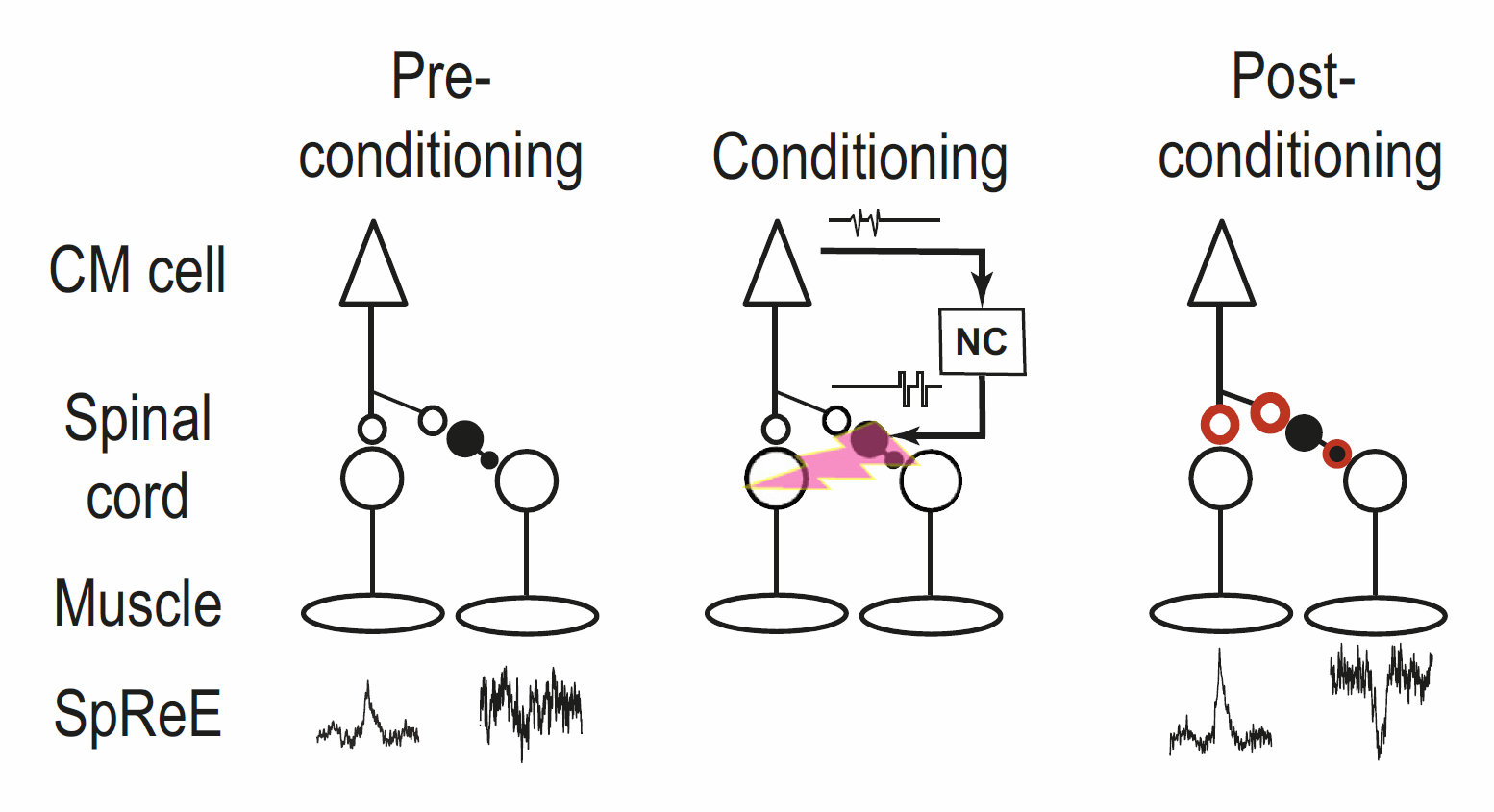You are here
Bidirectional interactions between the brain and implantable computers
Speakers
Closed-loop interactions between the brain and implantable computers open new opportunities for brain research and clinical applications. We are investigating the consequences of direct connections produced by an autonomous head-fixed bidirectional brain-computer interface (BBCI). This device consists of battery-powered electronics connected to electrodes that record the activity of motor cortex cells and/or muscles in non-human primates. It operates continuously during free behavior and generates activity-dependent stimulation of the brain or spinal cord. The neural activity is processed by a programmable computer chip and can be converted in real-time to activity-contingent stimuli. A promising application is to bridge impaired biological connections, a paradigm that was demonstrated for cortically controlled electrical stimulation of paralyzed forearm muscles (Moritz et al, Nature, 2008), and cortically controlled intraspinal stimulation (Nishimura et al, Frontiers in Neuroscience, 2013). A second application of the BBCI is to produce Hebbian plasticity through spike-triggered stimulation; this can strengthen neural connections, as demonstrated for neighboring motor cortical sites (Jackson et al, Nature, 2006). Similar plastic changes were produced in motor cortex by EMG-triggered stimulation (Lucas & Fetz, J. Neurosci. 2013). The strength of corticospinal connections was modified by cortically triggered intraspinal stimulation, in a manner consistent with spike-timing dependent plasticity (Nishimura et al, Neuron, 2013). Cortical stimuli triggered in phase with cortical beta oscillations produce transient phase-dependent changes in cortical connections that outlast the oscillatory episode (Zanos et al, in press). Such activity-dependent stimulation has clinical potential for targeted strengthening of neural connections weakened by stroke or injury (Edwardson et al Exp. Brain Res. 2013). A third application of the BBCI is to deliver intracranial reinforcing stimuli contingent on patterns of neural or muscular activity, thus implementing prolonged periods of operant conditioning during free behavior (Eaton et al, J. Neurophysiol. 2016). The BBCI paradigm has numerous potential applications, depending on the input signals, the computed transform and the output targets.


